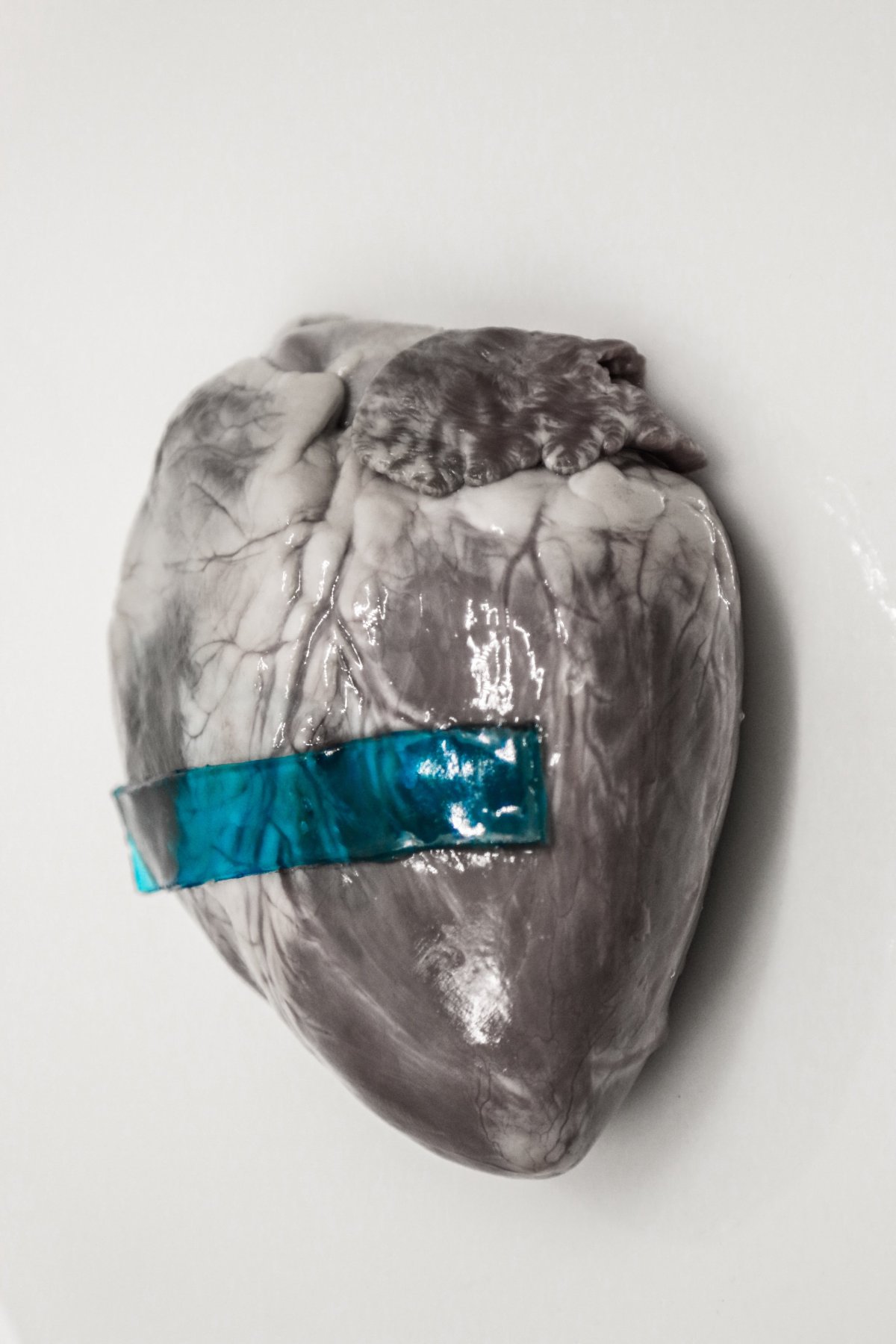
Sticky slug mucus has been used to create a glue that can stop internal bleeding by binding biological tissues together—even when they are wet. Scientists tested the adhesive on a range of tissues, including a pig's beating heart, and found it was safe and effective at sealing wounds—potentially paving the way for better medical adhesives for human use.
Slug glue
When threatened by a predator, Dusky Arion slugs secrete a mucus that glues it in place, meaning the gastropods cannot be pried away from the surface on which they're crawling. These slugs, known by scientists as Arion subfuscus and found across Europe and the northeastern U.S., have previously been studied by scientists because their unusual sticky mucus has several potential applications—especially when it comes to creating a glue than can stick to wet or dynamic surfaces.
Scientists have already determined the exact compounds that make the mucus so sticky. That work allowed Jianyu Li and colleagues, material scientists at the Wyss Institute at Harvard University, to synthesize a similar material in the lab and create an adhesive that can glue biological tissues under a range of difficult conditions, such as wet surfaces.
In their new study, published in the journal Science, the team tested their artificial slug mucus on several different animal tissues, including skin, cartilage, heart, artery and liver. The glue was found to perform better than other comparable medical adhesives.
How does it work?
Proteins carrying a positive charge held within a strong matrix render the real slug mucus extremely strong. To mimic that strength, scientists created a double-layered hydrogel—a gel where the liquid component is water—with positively charged structures protruding from the surface. This structure, coupled with the specially designed matrix, makes the glue remarkably adherent.
The approach differs from other glue technology. "Most prior material designs have focused only on the interface between the tissue and the adhesive," Li said in a statement. "Our adhesive is able to dissipate energy through its matrix layer, which enables it to deform much more before it breaks."
Li and his team found that breaking the bond of this experimental adhesive required three times more energy that other medical adhesives need. Furthermore, when the bond did break, it was the hydrogel that became separated, rather than the bond between adhesive and tissue. This finding further demonstrates the strength of the adhesion.
Researchers carried out a series of experiments with the artificial slug mucus. It worked on both wet and dry pig tissues and remained stable inside rats for two weeks. The mucus-inspired glue could seal a hole in a pig's heart that was mechanically inflated and deflated, and caused no tissue damage when applied to a liver hemorrhage in mice.

"The key feature of our material is the combination of a very strong adhesive force and the ability to transfer and dissipate stress, which have historically not been integrated into a single adhesive," corresponding author Dave Mooney said.
Potential applications
Researchers say their "next generation" adhesive has several potential medical applications. The glue could be developed into a patch cut to any desired shape or size. It could also be used as an injectable solution to treat injuries deep within the body. Its capacity for sticking to wet surfaces means it could also be used to attach medical devices to tissues within the body.
And the glue would remain nontoxic inside the body. "We can make these adhesives out of biodegradable materials, so they decompose once they've served their purpose," Adam Celiz, study co-author, said. He also holds a futuristic vision about the glue. "We could even combine this technology with soft robotics to make sticky robots, or with pharmaceuticals to make a new vehicle for drug delivery."
"Nature has frequently already found elegant solutions to common problems," said Donald Ingber, founding director of the Wyss Institute. "We are excited to see how this technology, inspired by a humble slug, might develop into a new technology for surgical repair and wound healing."
Uncommon Knowledge
Newsweek is committed to challenging conventional wisdom and finding connections in the search for common ground.
Newsweek is committed to challenging conventional wisdom and finding connections in the search for common ground.
About the writer
Hannah Osborne is Nesweek's Science Editor, based in London, UK. Hannah joined Newsweek in 2017 from IBTimes UK. She is ... Read more
To read how Newsweek uses AI as a newsroom tool, Click here.








